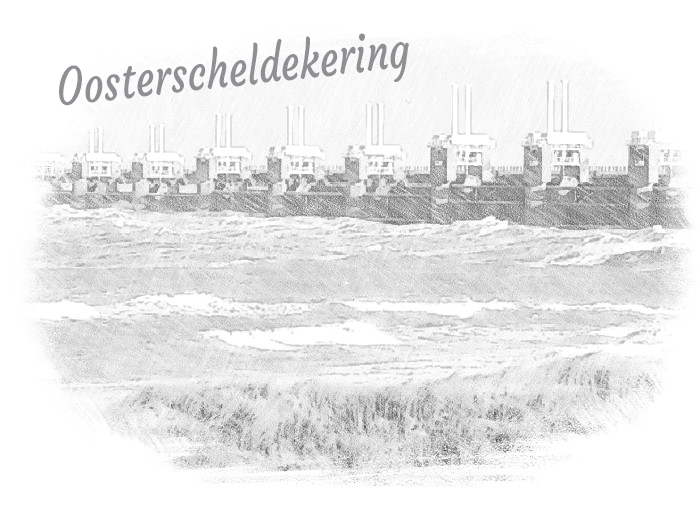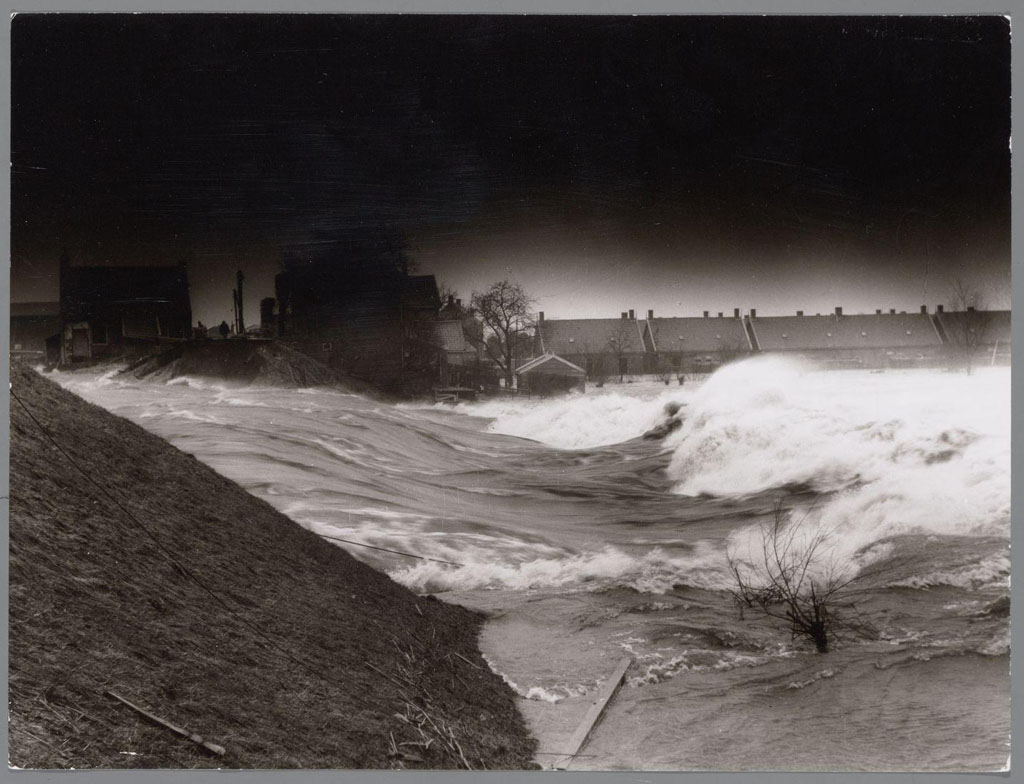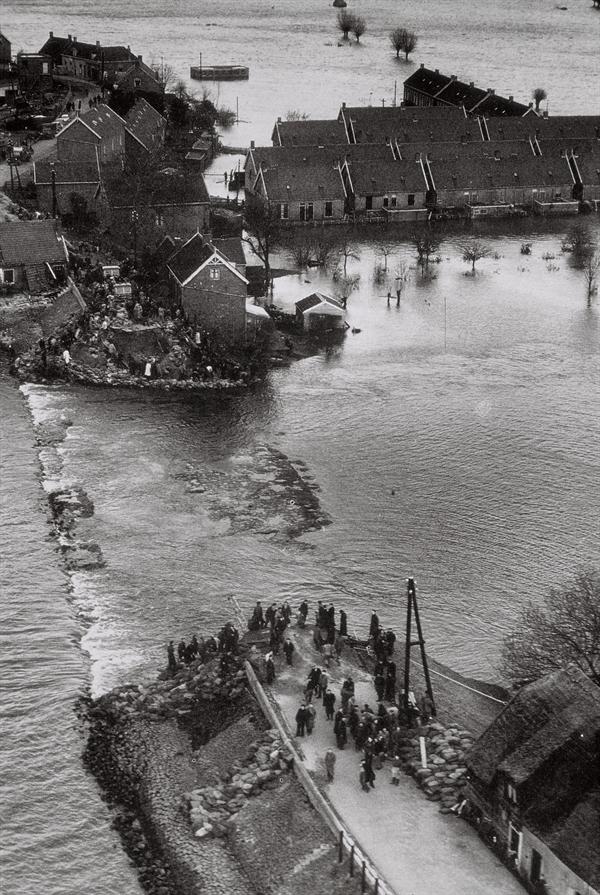
A Marvel of Coastal Engineering
The Eastern Scheldt Storm Surge Barrier stands as a testament to human ingenuity and engineering excellence. Located in the Netherlands, this colossal structure is designed to protect the low-lying regions of Zeeland, South Holland, and North Brabant from the relentless threat of storm surges and rising sea levels.
Completed in 1986, the Eastern Scheldt Barrier is the largest of its kind in the world. Its intricate system of sluice gates, dams, and barriers work in harmony to control the ebb and flow of the tides. During calm weather, the barriers remain open, allowing the delicate ecosystem of the Eastern Scheldt estuary to flourish. However, when a storm surge looms, the barriers can be closed, creating an impenetrable defense against the raging sea.
The barrier’s significance extends beyond protection. It embodies the Dutch spirit of water management, a struggle that has persisted for centuries. Its design elegantly balances nature conservation with the need for human safety, ensuring that both thrive harmoniously.
The Eastern Scheldt Storm Surge Barrier serves as an inspiration for coastal cities worldwide facing the daunting challenge of rising sea levels due to climate change. It underscores the power of human innovation when confronted with nature’s fury. As we grapple with the consequences of a changing climate, the Eastern Scheldt Barrier stands as a symbol of what can be achieved when determination meets engineering prowess in the face of a rising tide.
Originally, the intention was to completely dam the Oosterschelde. This was started in the late 1960s. For this purpose, several artificial islands were built, including Roggenplaat (1969), Neeltje Jans (1970) and Noordland (1971).
By the end of 1973, five of the nine kilometres of the Oosterschelde had already been dammed. In the early 70s of the twentieth century, however, a massive protest arose from the fishing industry, shellfish breeders, sailors and later also environmental organizations. The former users expected to lose their profession; sea sailors would no longer be able to use their inland home ports (Veere and Zierikzee). Finally, in 1976, it was decided to install sliding doors over the remaining four kilometers in length. These doors are normally open, but can be closed in a storm. The inflow of salt water and the tides in the Oosterschelde have thus been preserved, but have been restricted. As a result, there is still ebb and flow in the Oosterschelde and the water remains salty.
The latter is underlined by the poem by Ed Leeflang that is placed on the memorial stone on Neeltje Jans: “Here are about the tide: the moon, the wind and us”.

The Flood Disaster
It is the night of Saturday, January 31 to Sunday, February 1, 1953. Two days after full moon. The KNMI speaks in its forecasts of a north-northwesterly storm with a wind force 11 to 12 and ‘dangerously high water’.
The flood of 05.00 hours is also a spring tide.
Nevertheless, many people think that it will not be too bad. Wrongly.
The low tide – at 22.30 it must be low tide according to the water tables – does not occur. The water does not sink, but remains standing. The strong north-northwesterly storm pushes the water of the North Sea in the direction of the English Channel. Even before the tide is up, things go wrong in many places. At 02:00 the water comes over the dikes and flood boards for the first time.
1,836 people did not survive the disaster, tens of thousands of animals lost their lives and houses were also destroyed.In 1953, the inhabitants of the Randstad crawl through the eye of the needle. Although the dikes are in poor condition, they keep it. If the dikes had collapsed, it would have cost the lives of an estimated 25,000 to 35,000 people.
The number of deaths was 1836 in the Netherlands, 307 in the United Kingdom, 224 at sea, including 133 in the sinking of an English ferry and 28 in Belgium. The disaster prompted the development of a greatly improved coastal defense with heavy storm surge barriers. The most radical are the Delta Works in the Netherlands, while in England the Thames Barrier and a storm surge barrier have been built in the River Hull.
With a water level forecast of 3 m above sea level (Amsterdam Ordnance Datum or Normaal Amsterdams Peil), the Oosterscheldekering will be closed. This is done from the J.W. Topshuis on the island of Neeltje Jans.
With the push of a button, all 62 sliders go down. Closing the barrier takes 75 minutes. That time is needed to lower the sliders safely and controlled and evenly. Otherwise, the waves on the Oosterschelde would also become too violent. If the barrier does not close for some reason, this is still done automatically with an emergency locking system. The island of Neeltje Jans, which was used as a working island during the construction of the barrier, is now set up as a nature reserve: Oosterschelde National Park
Neeltje jans working isle
Neeltje Jans is part of the Oosterscheldekering as a working island. After completing the Delta Works, an information and amusement park was opened on Neeltje Jans.
In the information centre you can see an exhibition about the Delta Works with (visual) information.
Neeltje Jans is approximately 285 hectares in size and is located halfway between the Oosterscheldekering between Schouwen and Noord-Beveland, but nevertheless belongs to the municipality of Veere op Walcheren. The name Neeltje Jans is the name of the boat that got stuck on the sandbank, it is an old folk name for the patron goddess Nehalennia.
Neeltje Jans used to be a sandbank in the mouth of the Oosterschelde. By raising the sandbank, the work island was created, which was used at the time of the construction of the storm surge barrier. When the work was finished in 1986, Natuurmonumenten and Het Zeeuwse Landschap bought the island and transformed it into a nature reserve that is part of Oosterschelde National Park. The name Neeltje Jans is the name of the boat that got stuck on the sandbank, it is an old folk name for the patron goddess Nehalennia. Neeltje Jans used to be a sandbank in the mouth of the Oosterschelde.













